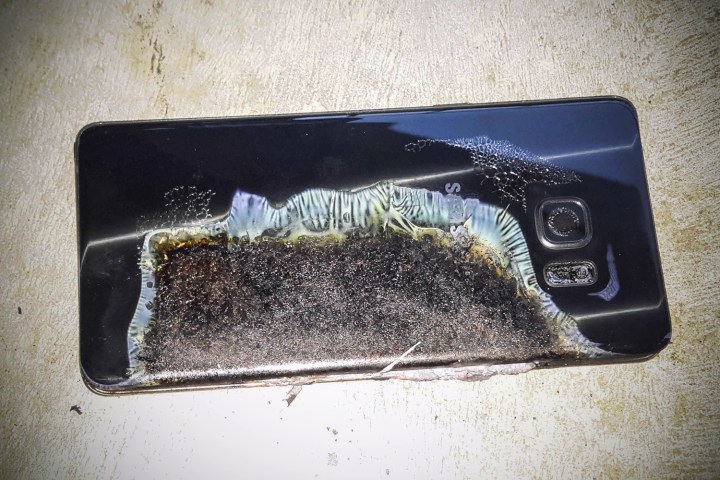
After acquiring a Galaxy Note 7 — no easy feat once the phones were recalled — engineers with manufacturing technology company Instrumental stripped the phone down to see what was going on inside (and yes, they had a fire extinguisher nearby, just in case). They discovered the battery was so tightly packed inside the Galaxy Note 7’s body that any pressure from battery expansion, or stress on the body itself, may squeeze together layers inside the battery that are never supposed to touch — with explosive results.
Batteries swell up under normal use, and we place stress on a phone’s body by putting it our pocket and sitting down, or if it’s dropped. Tolerances for battery expansion are built into a smartphone during design, and Instrumental notes Samsung used “a super-aggressive manufacturing process to maximize capacity.” In other words, the Galaxy Note 7 was designed to be as thin and sleek as possible, while containing the maximum battery capacity for long use, thereby better competing against rival devices such as the iPhone 7 Plus and improving on previous Note models.

The report speculates that any pressure placed on the battery in its confined space may have squeezed together positive and negative layers inside the cell itself, which were thinner than usual in the Note 7’s battery already, causing them to touch, heat up, and eventually in some cases, catch fire. Delving deeper into the design, the engineers say the space above a battery inside a device needs a “ceiling” that equates to approximately 10 percent of the overall thickness. The Galaxy Note 7 should have had a 0.5mm ceiling; it had none.
“It breaks such a basic rule, it must have been intentional,” says the Instrumental team, adding, “they shipped a dangerous product.”
The Galaxy Note 7 fiasco may cost Samsung more than $20 billion, and reports of this nature won’t help re-establish trust in the brand. However, it’s worth repeating this isn’t a Samsung report, so none of the findings are official, and that Instrumental itself produces software and equipment for quality testing in manufacturing. This means that although it has a strong understand of what it’s looking at, it is also promoting its own products and solutions in this market.
Samsung’s next major smartphone release is expected to be the Galaxy S8, due sometime in early 2017, according to rumors.
Editors' Recommendations
- Samsung Galaxy Watch 7: news, rumored price, release date, and more
- I did a Pixel 7a camera test — and it’s bad news for Samsung
- I did a Galaxy S23 Ultra vs. Pixel 7 Pro camera test — and it’s not even close
- Goodbye Samsung Galaxy Note 20, you were a terrible phone
- Samsung’s self-repair program launches for Galaxy S21, S20, and Tab S7 Plus




